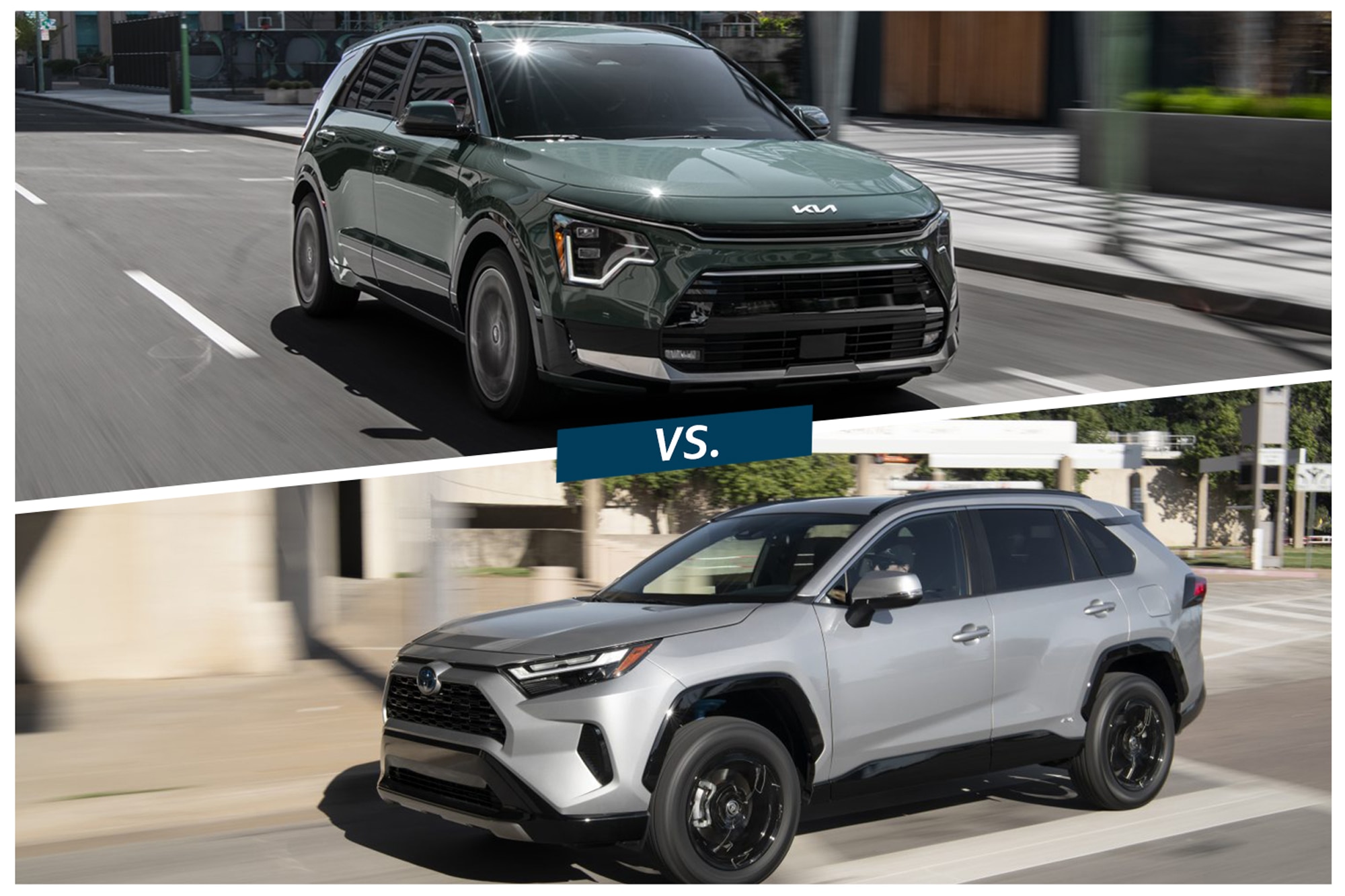Hybrid vs. Plug-In Hybrid: What's the Difference?
Though similar in concept, hybrids and plug-in hybrids are a world apart when it comes to the ownership experience.
 Kia/Toyota
Kia/Toyota
High gas prices are a powerful reminder of the efficiency—and savings—that hybrid vehicles can bring. Adding an electric motor to a gas-powered car boosts fuel economy, especially in low-speed, short-distance driving like urban traffic.
Simply put, a hybrid combines the power of a gas-fueled engine with that of an electric motor. A computer manages their operation, together or separately, as needed, to match the driving situation. Most hybrids drive off using their electric motor, and when more power is needed to reach higher speeds, the system combines the output of the gas engine and electric motor.
A hybrid typically costs a bit more than the gas-only version – $1,150 in the case of a 2022 Toyota RAV4. The lower fuel cost can make up the difference in a couple of years in that example.
Plug-In Hybrids Have Bigger Batteries and More Electric Range
The difference between a hybrid and plug-in hybrid is that the plug-in hybrid electric vehicle (PHEV) furthers the hybrid’s fuel economy advantage by installing a higher-capacity battery—and in some cases a more powerful electric motor—to extend the battery-only driving distance. Choices abound, and some models, including the Toyota Prius and RAV4, Kia Niro, and Ford Escape, are offered in both hybrid and more efficient plug-in hybrid versions.
In conventional hybrids, some of which can drive about a mile on electricity alone, a battery pack stores electrical energy captured during normal driving, so there’s no plugging in to recharge. The battery is replenished by the gas engine, and it also recharges with energy converted to electricity when the car slows, a process called regenerative braking.
Electric driving range varies among plug-in models, with many providing around 20 to 40 miles before the vehicle automatically switches to hybrid mode and starts the gas engine. The Toyota RAV4 Prime, as the plug-in version is known, is rated by the Environmental Protection Agency (EPA) to go 42 miles on its larger battery (18 kilowatt-hours (kWh) for the Prime versus 1.6 kWh for the RAV4 Hybrid). For many drivers, 42 miles covers the daily commute without the gas engine ever starting.
Plugging In Provides Savings at the Pump
When parked, a plug-in hybrid can be connected to a standard household outlet or a 240-volt circuit to recharge. A full charge on 120 volts takes about 12 hours for the RAV4 Prime, while using a 240-volt outlet cuts that to 4.5 hours (or 2.5 hours with the optional 6.6-kilowatt onboard charger).
Plugging in whenever possible nets the greatest fuel savings. For the Ford Escape plug-in, the EPA estimates that someone who drives 15,000 miles a year can save an additional $3,000 over five years compared with the non-plug-in-hybrid version. The RAV4 Prime potentially cuts the five-year fuel bill by $2,750 over the regular hybrid version.*
Tax Credits Reduce the PHEV Price Premium
Plug-in models cost more than their standard hybrid counterparts—over $5,000 higher in the case of the Ford Escape—but an available federal tax credit of up to $7,500 can help offset the difference. Under current tax law, the credit decreases as a manufacturer sells more eligible vehicles, so check sources like the
*These estimates are based on the price of gasoline on April 12, 2022. The EPA’s fueleconomy.gov site updates daily.
Written by humans.
Edited by humans.
 Jim Koscs
Jim KoscsJim Koscs has been writing about cars for more than 30 years, his byline appearing in national enthusiast and trade publications, newspapers, and websites. He covers a broad spectrum of topics in automotive business, culture, collecting, design, history, racing, and technology. The "car thing" goes way back for Jim. At the 1968 New York Auto Show, he snuck away from his father to get a better look at a Rolls-Royce... from underneath it, to see if it had dual exhausts. (It didn't.)
Related articles
View more related articles